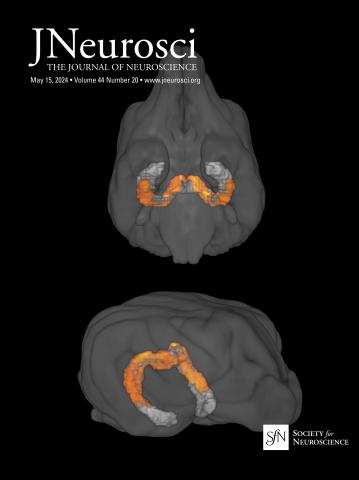Emerging adulthood is marked by a cortical dendritic arborization phase depending on the actin nucleator Cobl.
IF 4.4
2区 医学
Q1 NEUROSCIENCES
引用次数: 0
Abstract
Puberty triggers significant changes. However, besides the pruning of synapses, little is known about more long-range alterations during brain maturation. Actin filament formation - a process ignited by actin nucleators - is crucial for life and also a driving force behind cellular morphology changes. Yet, the physiological importance of especially the more recently discovered, evolutionary younger actin nucleators largely remain elusive. We demonstrate the consequences of deficiency for the actin nucleator Cobl in the mouse brain. We identify remarkably layer- and age-restricted cortical Cobl KO phenotypes in dendritic arborization that first transiently emerge in layer V in rather young adolescent male mice and then manifested in a similar but more pronounced manner in layer II/III during the age of emerging adulthood. Cobl KO phenotypes were observed in the somatosensory cortex, prefrontal cortex and motor cortex. In WT mouse cortices, we discovered an increase in dendritic arbor complexity occurring during emerging adulthood and thereby identified a long-range process for cortical rewiring upon brain maturation. This dendritic arbor expansion is transient and largely erased during mature adulthood. The transient dendritic arbor expansion during emerging adulthood was accompanied by transient length changes of dendritic spines. Molecularly, the process thus seems to relate to alterations in actin dynamics. Importantly, both of these changes were completely absent in Cobl KO mice. Increased risk-taking of Cobl KO mice point towards a lack of maturity. These observations revealed the actin nucleator Cobl as first molecular component crucial for the identified emerging adulthood-related changes of neurons towards brain maturation.Significance statement Puberty triggers significant changes. We discovered a transient increase in dendritic arbor complexity occurring during emerging adulthood. This identified a long-range process for cortical rewiring during the age of emerging adulthood. Also dendritic spines were transiently rearranged. Both processes turned out to be dependent on the actin nucleator Cobl. We discovered remarkably layer- and age-specific cortical Cobl KO phenotypes in dendritic arborization. These first transiently emerged in layer V in adolescent mice and then manifested in a similar but more pronounced manner in layer II/III during the age of emerging adulthood. This identified the actin nucleator Cobl as the first crucial component for the discovered reorganizations towards brain maturation.成年初期的特征是皮层树突树突化阶段,这取决于肌动蛋白成核子Cobl。
青春期会引发重大变化。然而,除了突触的修剪,人们对大脑成熟过程中更长期的改变知之甚少。肌动蛋白丝的形成——一个由肌动蛋白成核器引发的过程——对生命至关重要,也是细胞形态变化背后的驱动力。然而,特别是最近发现的,进化较年轻的肌动蛋白成核核的生理重要性在很大程度上仍然难以捉摸。我们证明了小鼠大脑中肌动蛋白核子Cobl缺乏的后果。我们在树突乔木中发现了明显的层限制和年龄限制的皮质Cobl KO表型,这些表型首先在相当年轻的青春期雄性小鼠的V层短暂出现,然后在成年期的II/III层以类似但更明显的方式表现出来。在体感觉皮质、前额叶皮质和运动皮质中观察到Cobl - KO表型。在WT小鼠皮层中,我们发现树突乔木复杂性的增加发生在成年初期,从而确定了大脑成熟时皮层重新布线的长期过程。这种树突乔木扩张是短暂的,在成年期大部分被清除。成年期树突乔木的短暂扩张伴随着树突棘长度的短暂变化。从分子上讲,这一过程似乎与肌动蛋白动力学的改变有关。重要的是,这两种变化在Cobl - KO小鼠中完全不存在。Cobl - KO小鼠的冒险行为增加表明它们不够成熟。这些观察结果表明,肌动蛋白核子Cobl是第一个分子成分,对于确定的新兴成年期神经元向大脑成熟的相关变化至关重要。青春期会引发重大变化。我们发现树突乔木复杂性的短暂增加发生在成年期。这项研究确定了一个长期的皮层重新布线过程,这个过程发生在初生成年期。树突棘也有短暂的重新排列。这两个过程都依赖于肌动蛋白成核体Cobl。我们在树突乔木中发现了明显的层特异性和年龄特异性皮质Cobl KO表型。这些首先在青春期小鼠的第五层短暂出现,然后在成年期的第二/第三层以类似但更明显的方式表现出来。这证实了肌动蛋白核子Cobl是大脑成熟过程中发现的重组的第一个关键组成部分。
本文章由计算机程序翻译,如有差异,请以英文原文为准。
求助全文
约1分钟内获得全文
求助全文
来源期刊

Journal of Neuroscience
医学-神经科学
CiteScore
9.30
自引率
3.80%
发文量
1164
审稿时长
12 months
期刊介绍:
JNeurosci (ISSN 0270-6474) is an official journal of the Society for Neuroscience. It is published weekly by the Society, fifty weeks a year, one volume a year. JNeurosci publishes papers on a broad range of topics of general interest to those working on the nervous system. Authors now have an Open Choice option for their published articles
 求助内容:
求助内容: 应助结果提醒方式:
应助结果提醒方式:


